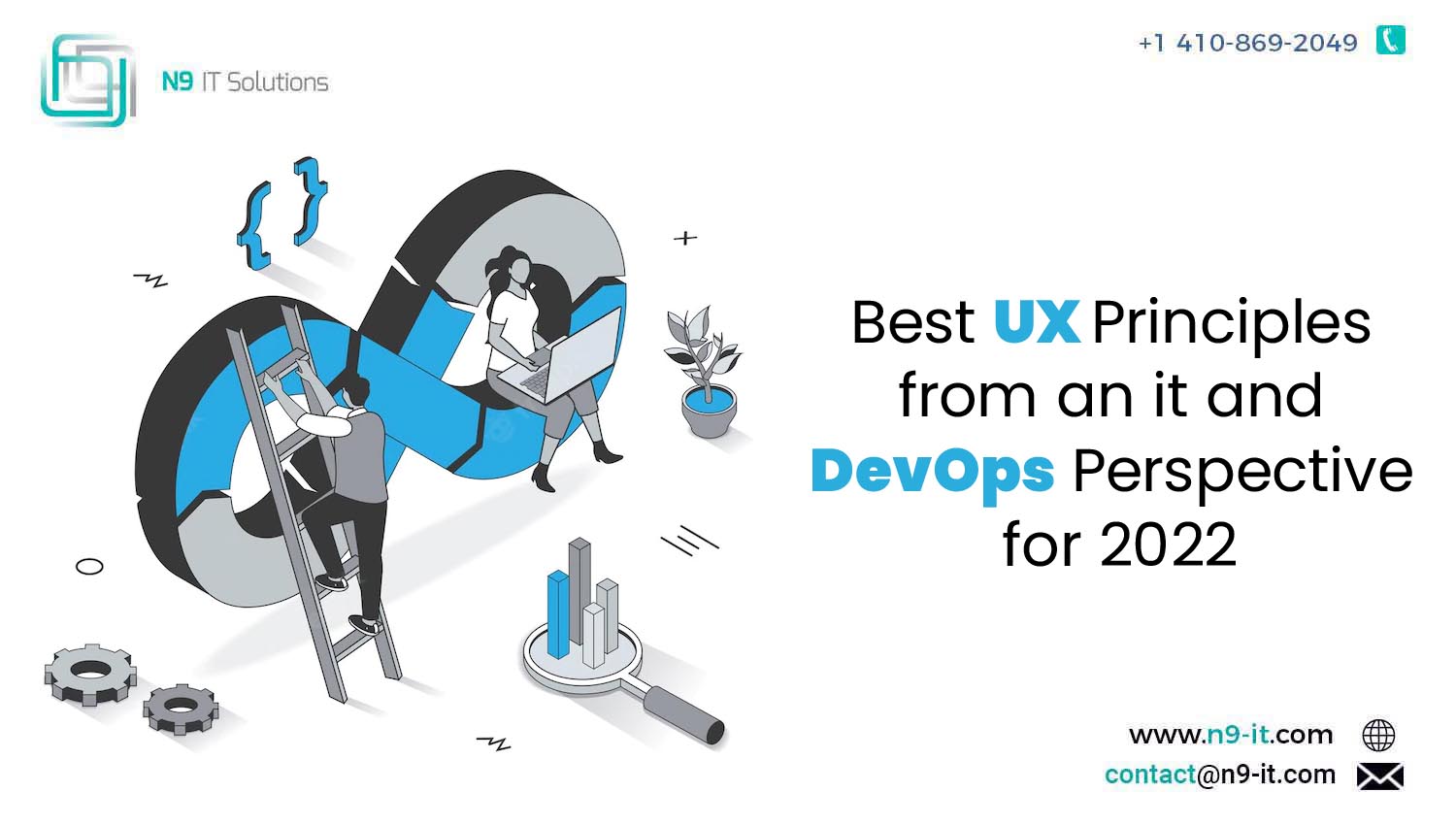Best UX Principles from an it and DevOps Perspective for 2022
When we hear the word design, we think of a creative role, in which an individual crafts and designs something beautiful. But there is a thing with UX design that makes us understand that only aesthetically good designs won’t make for a usable interface. A good UX design is made with great user research. When a design is combined with essential rules and principles, then a better user experience and brand trust is the result.
"We must design for the way people behave, not for how we would wish them to behave”
WHAT IS A UX DESIGN?
UX stands for user experience, which covers all the aspects of the end-user interaction with the company, its products and its services. The focus of user experience is to find the balance between the business goals and user needs. Simply put, it is about how the user feels while using your application, website or software. It caters to the user with preferences, perceptions, emotions, feelings and much more. A positive UX design enhances usability, accessibility and interaction with your website or app.
According to a study published by Forrester Research, a great UX could increase the same by almost 400%. Also, according to research done by Forrester, the usability has a big effect on customers satisfaction; so much so that it:
Increases their willingness to pay by 14.4%.
Reduces their reluctance to switch brands by 15.8%.
5 SECONDS. THIS IS ENOUGH TO MAKE AN IMPRESSION ABOUT YOUR APPLICATION:
Psychological research confirms that the human brain operates extremely fast (in thousandths of a second), and the first impression arises in the mind very quickly, in an uncontrolled manner. Therefore, you must do everything possible to ensure that your product is positively assessed within the first 5 seconds.
BEST UX PRINCIPLES:
Focus on the user:The most important golden rule of creating a good UX is straightforward, and yet it causes many problems for designers. Keep in mind that your focus must always be on the user throughout the digital product development process. You must accept his perspective, understand his needs and expectations. Therefore, you must try to get to know your users.
Great design has always been about elegant combinations of form and function, and by integrating user experience into your web design at the earliest possible stage, you will end up with a site that is genuinely user centric.
Customer needs:
Understanding and recognizing the needs of your users is essential. It is worth conducting user research to get to know them and thoroughly understand their problems and expectations. If you have no idea how to begin, there are many established customer research companies to which you can outsource this task. Using their experience and know-how they will prepare reliable reports answering your questions using modern research tools and methods. However, using the services of such companies is not cheap.
UI UX working Terminology that every designer should must know
HOW WILL UX CHANGE? TRENDS FOR 2022 AND BEYOND
- Motion design and gestural interfaces:
- UX designers will become more specialized:
- Designing for VR/AR, 3D interfaces
- Working alongside AI:
- A FINAL WORD
- N9 IT Solutions is a leading IT development and consulting firm providing a broad array of customized solutions to clients throughout the United States.
- It got established primarily with an aim to provide consulting and IT services in today’s dynamic environment.
- N9 IT also offers consulting services in many emerging areas like Java/J2ee, Cloud Computing, Database Solutions, DevOps, ERP, Mobility, Big Data, Application Development, Infrastructure Managed Services, Quality Assurance and Testing.
We are Hiring All Graduates
Share your profile to resumes@n9-it.com

